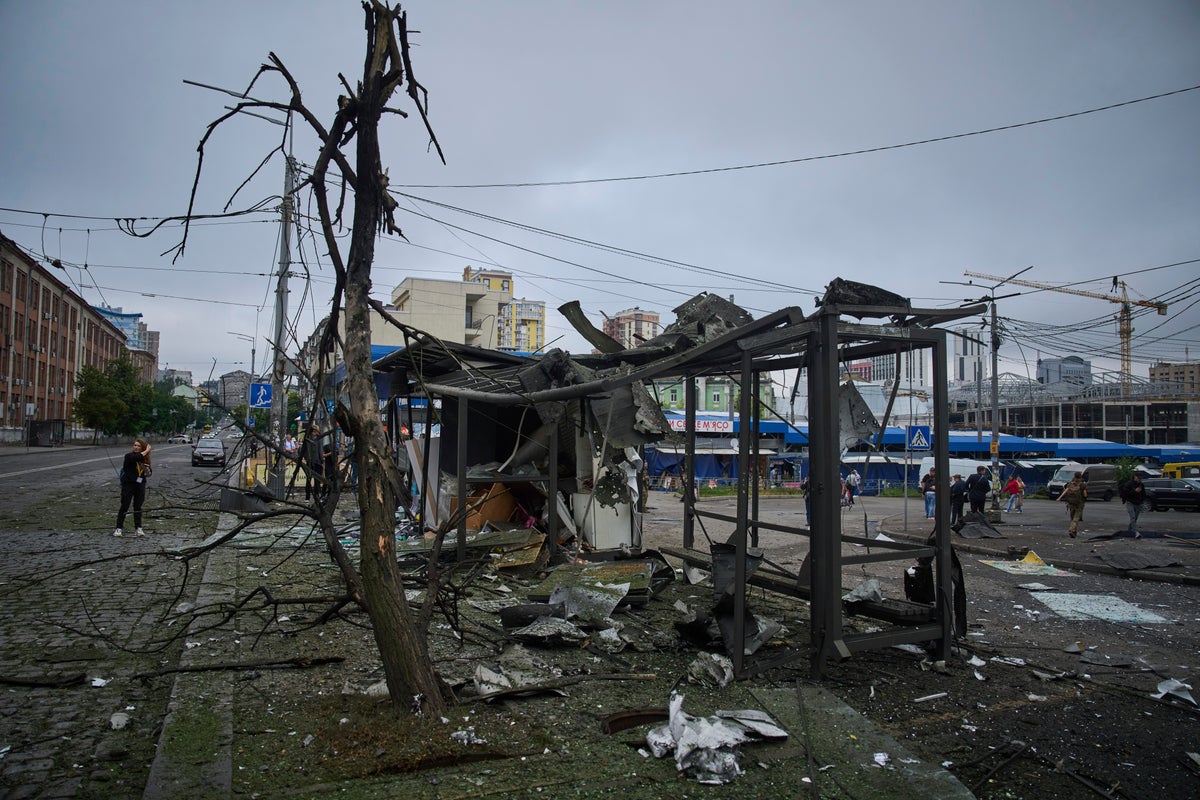Escalation of Aerial Strikes on Ukraine
Russia has carried out fresh aerial attacks on Ukraine overnight, resulting in the deaths of two individuals and injuries to several others. According to Ukraine’s air force, Russia launched 426 drones and 24 missiles during the night, bringing the total number of strikes this month to 5,402. In response, Ukrainian President Volodymyr Zelensky has called on Ukraine’s allies to increase the production of air defense systems and interceptor drones to better protect against future assaults.
The recent attacks are part of a broader pattern of escalating aerial strikes that have persisted over the past two months. This article explores how and why Russia has intensified its targeting of Ukrainian cities with such significant force.
Surge in Attacks from June Onwards
Since June, Russia’s aerial strikes on Ukraine have seen a dramatic increase, with notable peaks in intensity. Data shows that the six most concentrated attacks have occurred in the last month. The Ukrainian air force reports that 5,402 drones and missiles have been launched against the country so far this month, with the frequency of attacks rising sharply in recent weeks.
The most lethal day came on 9 July, when Moscow fired 741 drones and missiles. Other intense barrages followed, including 623 on 12 July and 550 on 4 July. Although there was a temporary drop in the middle of the month, with only 35 reported on 18 July and 64 on 17 July, the pace has picked up again in the past week, with 330 weapons fired on Saturday and another 450 on Sunday.
In June alone, there were five instances where Russia deployed over 400 drones and missiles in a single night.
Planning for Increased Strikes
Federico Borsari, a Fellow with the Transatlantic Defence and Security Program at the Center for European Policy Analysis (CEPA), stated that the Russian military likely planned an increase in strikes for at least a year. He noted that signs of Russia attempting to boost its capacity to launch attacks against Ukraine had been evident in 2024.
Borsari explained that the increase in drone usage is aimed at making air raids more effective. “Russia is trying to diversify its strike packages to make them more cost-effective and achieve a scale of destruction sufficient to destroy key military targets such as airfields,” he said.
He added that for over three years, Russia had not been very effective in reducing Ukraine’s industrial production capacity. Additionally, it failed to create a sense of panic among the population, which could have undermined the government’s effectiveness on the front lines.
Psychological Warfare and Strategic Targets
According to Borsari, Russia has shifted its strategy to be more tactical in increasing damage against critical infrastructure while also targeting manpower. “Russia is now focusing on strategic targets such as military enlistment offices across different areas of Ukraine,” he said. “The goal here is not just to destroy energy plants or other infrastructure, but to instill fear and create a sense of panic among the population.”
He emphasized that the psychological impact of these strikes could weaken Ukraine’s ability to recruit soldiers. “This is certainly an issue for Ukraine compared to Russia,” Borsari noted.
Earlier this month, Lutsk, a city in northwestern Ukraine, was hit by a Russian drone strike. Lutsk is home to airfields used by the Ukrainian army, with cargo planes and fighter jets frequently flying over the area.
Unpredictable Attack Patterns
Analysis reveals that while Moscow is increasing its drone output and intensifying attacks, the patterns do not follow a consistent schedule. For example, on 8 July, Russia fired 52 drones at Ukraine, followed by a record 550 the next day, and then 322 on the following day.
Marcel Plichta, a former U.S. Department of Defense analyst, suggested that Russia is employing an “on and off days” approach to its attacks. “On the big attack days, you see record-breaking numbers, and on the off days, it might be like 100 or 61 drones,” he explained.
Plichta highlighted that large attacks are more effective in grabbing headlines and overwhelming Ukrainian air defenses, which can negatively impact morale. “It’s worse to shoot down 500 drones at once than 200 over two nights because you have to prioritize and respond to all of them at once,” he said.
Continued Conflict and Drone Strategy
Both analysts agree that the escalation of aerial strikes indicates that a ceasefire is unlikely in the near future. “Russia has demonstrated that they’re fully committed to using Shahed drones as a platform,” Plichta said. “They will continue to improve and introduce more advanced variants, but fundamentally, they are all in on the idea of mass drone attacks alongside missiles.”
He added, “Ultimately, the only thing that will stop these drones is a political end to the conflict, not a magic weapon or even a significant increase in interception rates.”
Borsari echoed this sentiment, stating, “It’s clear that Russia is not interested in achieving a ceasefire based on the conditions that the US and Ukraine hoped for.”







